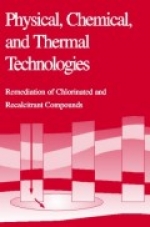Tab Article
Physical, chemical, and thermal technologies represent the mainstream remediation approaches for site contaminated by chlorinated and recalcitrant compounds worldwide. Recently there have been both new technology developments and significant advances in some of the more traditional remediation technologies. Physical, Chemical, and Thermal Technologies: Remediation of Chlorinated and Recalcitrant Compounds offers a comprehensive overview of the remediation technology spectrum, with chapters covering such diverse topics as soil vapor extraction, multiphase extraction, enhancements to pump-and-treat systems, groundwater circulation wells, thermal desorption, in situ technologies, plasma technologies, in situ processes, dehalogenation technologies, air sparging, oxidation technologies, and photo-, electro-, and catalytic mechanisms.


